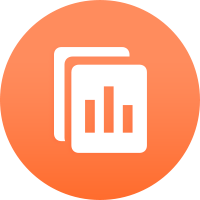#NewbieGuide
If you’re new to trading, your main goal should be to learn, not earn. The first step is understanding how the market works — prices move based on supply, demand, and global economic factors. Begin by choosing one market, such as forex, crypto, or stocks, and master its fundamentals before expanding. Use a demo account to practice trading without risking real money; this helps you understand order types, spreads, and leverage. Learn to read candlestick charts, identify trends, and mark key support and resistance levels. Avoid the trap of following random social media signals — instead, study real analysis and form your own trading plan. Always use stop-loss orders to protect your capital, and never trade with money you can’t afford to lose. Stay patient — real success takes time and discipline. Keep a trading journal to track your performance and emotions after every trade. Finally, focus on consistency, education, and emotional control — because in trading, mastering your mind is as important as mastering the charts.
#NewbieGuide
If you’re new to trading, your main goal should be to learn, not earn. The first step is understanding how the market works — prices move based on supply, demand, and global economic factors. Begin by choosing one market, such as forex, crypto, or stocks, and master its fundamentals before expanding. Use a demo account to practice trading without risking real money; this helps you understand order types, spreads, and leverage. Learn to read candlestick charts, identify trends, and mark key support and resistance levels. Avoid the trap of following random social media signals — instead, study real analysis and form your own trading plan. Always use stop-loss orders to protect your capital, and never trade with money you can’t afford to lose. Stay patient — real success takes time and discipline. Keep a trading journal to track your performance and emotions after every trade. Finally, focus on consistency, education, and emotional control — because in trading, mastering your mind is as important as mastering the charts.












